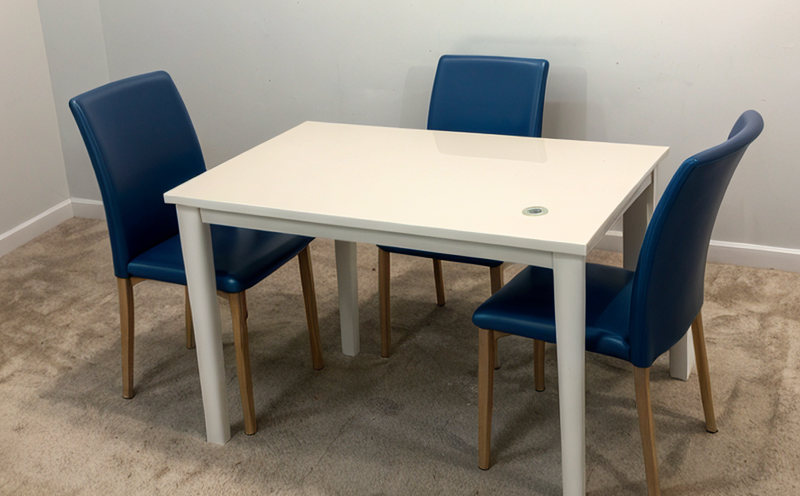ISO 4589 Oxygen Index Testing of Furniture Plastics
The ISO 4589 test method is a critical tool for assessing the flammability properties of plastics used in furniture. This method quantifies the lowest oxygen concentration at which a plastic sample will continue to burn under controlled atmospheric conditions. Understanding this value allows manufacturers and designers to make informed decisions regarding material selection, ensuring that the final product meets both safety standards and consumer expectations.
The test is particularly important for furniture plastics due to the high volume of these materials used in household and commercial settings. The results from ISO 4589 testing help ensure that the chosen plastic not only performs well under normal use but also remains safe when exposed to ignition sources, such as cigarettes or sparks from electrical devices.
During the test, a sample of the plastic is placed into a small combustion chamber filled with an oxygen-nitrogen gas mixture. The mixture's oxygen content can be precisely controlled and gradually reduced until the sample just ceases to burn. This point marks the critical oxygen index value for that particular material. By repeating this process multiple times, the average value and variability of the material can be determined.
The results are not only used in compliance with regulations but also serve as a benchmark for internal quality control during product development. Understanding how changes in formulation or processing affect the oxygen index helps engineers optimize materials to meet both performance and safety requirements.
It is essential that the testing laboratory adheres strictly to ISO 4589 standards, using calibrated equipment and trained personnel. This ensures accurate and reproducible results across different tests and laboratories. The reliability of these outcomes plays a crucial role in maintaining product quality and ensuring consumer safety.
Applied Standards
| Standard Number | Description |
|---|---|
| ISO 4589:2006(E) | Determination of the oxygen index of plastics |
The ISO 4589 standard provides a comprehensive guide for conducting the test. It specifies the apparatus required, such as the combustion chamber and gas supply system, along with detailed procedures for sample preparation and testing conditions.
Adherence to these standards ensures that the results are consistent across different laboratories and can be compared reliably. This is particularly important in industries where material flammability is a critical factor, such as furniture manufacturing.
Why Choose This Test
- Predicts the minimum oxygen concentration needed for combustion of plastics used in furniture.
- Mandatory for compliance with global safety regulations and standards.
- Provides critical data for material selection and optimization.
- Serves as a quality control measure during product development.
- Aids in understanding the impact of formulation changes on flammability properties.
The ISO 4589 Oxygen Index Testing is a cornerstone test for ensuring that plastics used in furniture are safe and compliant with international standards. It offers invaluable insights into material behavior, helping manufacturers to make informed decisions and ensure product safety.
Quality and Reliability Assurance
The ISO 4589 Oxygen Index Testing is a vital tool for ensuring the quality and reliability of furniture plastics. By conducting this test, manufacturers can:
- Ensure compliance with relevant safety regulations.
- Achieve consistent product performance across different batches or production runs.
- Optimize material formulations to enhance both flame retardancy and overall performance.
- Reduce the risk of non-compliance penalties and recalls due to flammability issues.
The test results provide a quantitative measure that can be used for continuous improvement in product design. This allows manufacturers to stay ahead of industry trends and meet evolving safety standards, thereby enhancing their reputation and market position.





